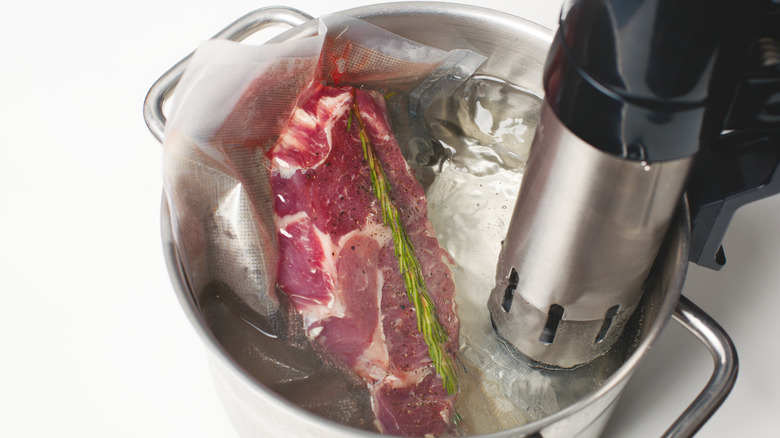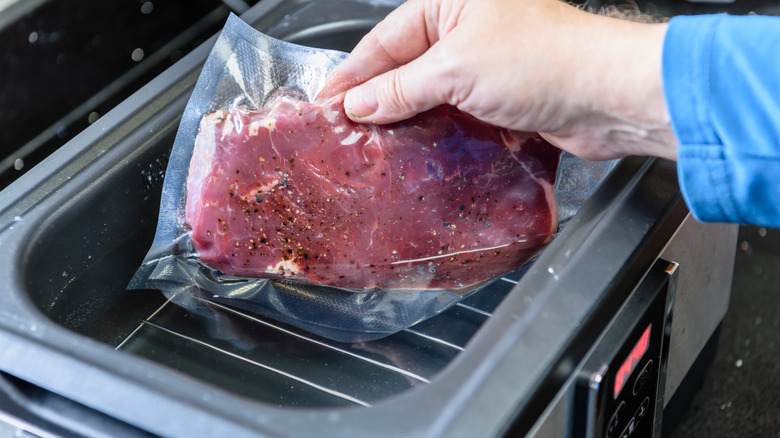How Much Water Do You Actually Need For Sous Vide?
French cooking techniques can sound intimidating, and indeed, many of them are. Soufflés are notoriously easy to ruin. Béarnaise sauce requires extreme precision in timing and temperature. And croissants require more patience to master than many of us probably possess (per Chowhound). It's no wonder the term "sous vide" has the power to intimidate. However, this cooking technique, although it requires precise temperature control, is actually simpler than it sounds.
Basically, sous vide (which translates to "under vacuum") is the process of cooking food, sealed air-tight in plastic bags, in warm water. "Low and slow" is the principle behind the technique. Bon Appétit, calling it "low-key" cooking says, "There's no contact with a heated metal surface. No contact with flames or steam or smoke. The water never comes to a boil." The Spruce Eats also points out that the sous vide technique makes it virtually impossible to overcook whatever you're cooking, whether it is red meats, poultry, fish, eggs, or vegetables. This is because the water never gets too hot. Sous vide cooking temperatures range from 120° to 185°F, according to Amazing Food Made Easy.
While you can cook food in the sous vide style using a regular pot or Dutch oven on your stove's burner, this technique is difficult because it requires constant monitoring and "micro-adjustments" of water temperature (via The Spruce Eats). Most people with an interest in the technique choose to purchase a sous vide cooker or an immersion circulator, which both moves the water throughout the pot and maintains temperature. But when it comes to how much water to use, there are important guidelines to know.
Watch for low water levels when cooking sous vide style
There are a few things that can go wrong with sous vide cooking. Fluctuating water temperatures, packets that won't stay submerged, and using too little or too much water are some of the pitfalls (per Delishably).
Water levels are tricky in sous vide cooking because, while you need a fairly generous amount in the pot or machine to properly cook the food, sous vide's extended cooking times can cause water levels to get too low, resulting in undercooked or unevenly cooked food.
Whether you're using a stock pot or a sous vide cooker, there are ways to make sure your water level is just right, according to Delishably. The website says that for a stock pot or Dutch oven, start your process with enough water to last throughout the cooking time (which can be several hours), but not so much that it overflows after the food pouch goes in.
If using an immersion circulator, you'll also need to make sure the water level doesn't go below the heating and circulation elements. Sous vide machines are a bit easier. Most of them have indicator lines for minimum and maximum water levels. Stay in this range, and your food will cook perfectly.
A final word about water levels: Delishably advises using a lid or plastic wrap on the water bath. Each of these will help to keep the water from evaporating.
If you have a tendency to overcook your favorite steak, chicken, or vegetable, consider trying the sous vide method. With a little practice, it may become your new favorite way to prep.

